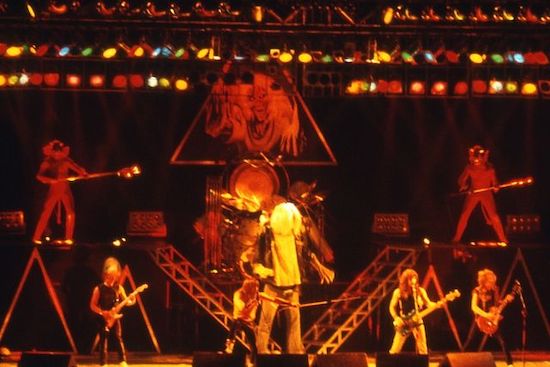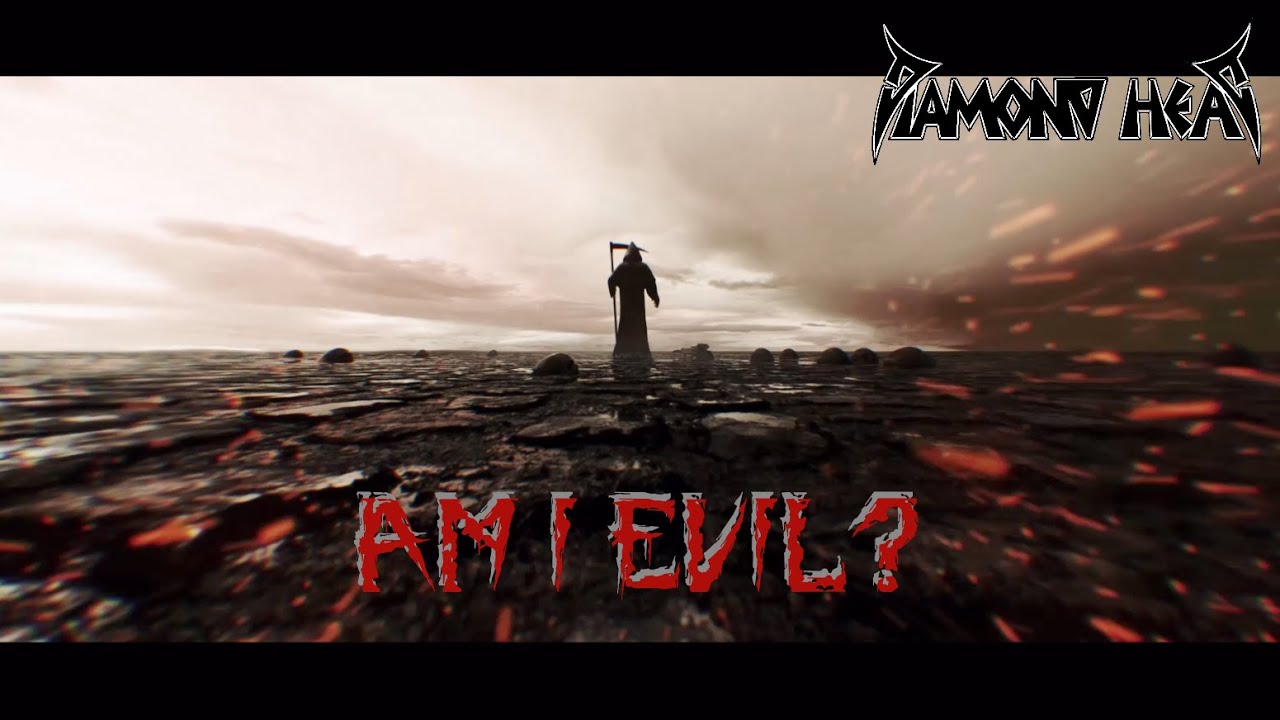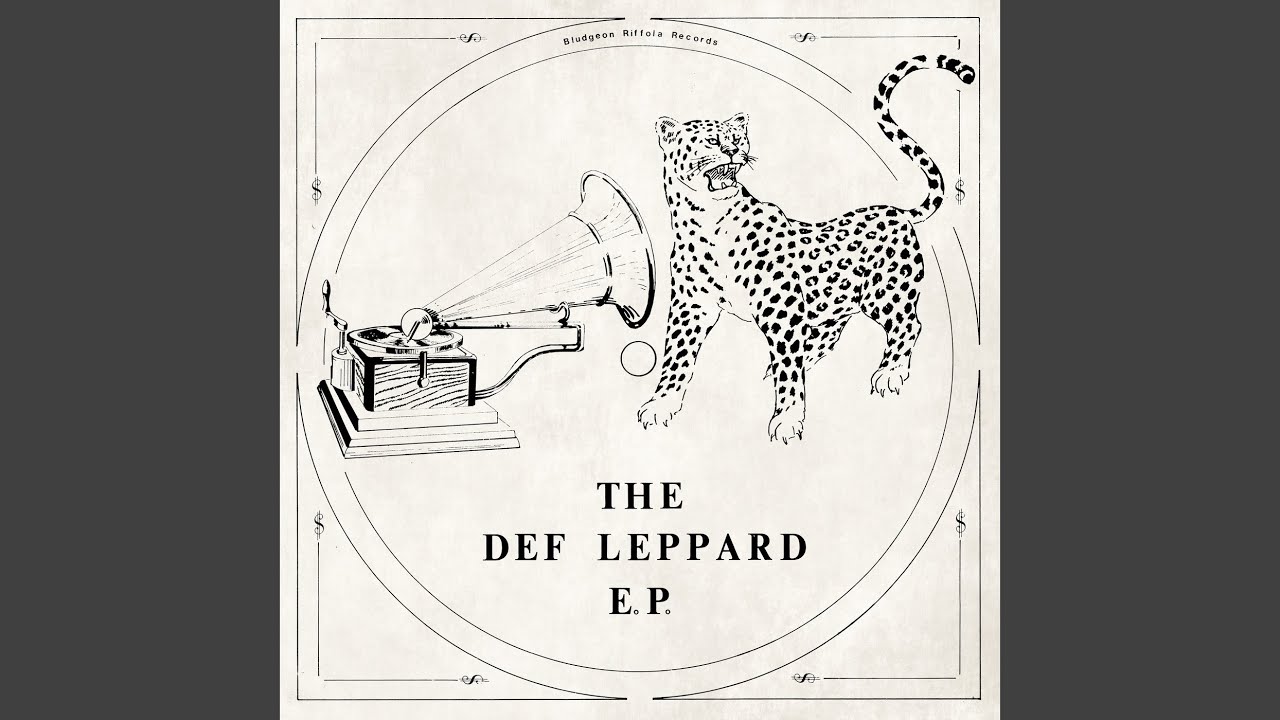Photo by Fernando Catalina Landa. CC BY 2.0
Outside of a hardcore of grizzled loyalists and fanatical record collectors, the New Wave of British Heavy Metal (NWOBHM) tends to be remembered for what came after. The scene that emerged at the backend of the 1970s and the start of the 1980s propelled bands like Iron Maiden and Def Leppard to stardom and provided the inspiration for Metallica and other thrash bands a bit later on. Yet much of the torrent of music that the scene produced is neglected nowadays; the likes of Praying Mantis, Tank and Samson are listened to only by the nostalgic and the fanatical. Even innovators like Diamond Head and Raven, while they still tour and record, are overshadowed by many of the bands they inspired.
Is NWOBHM due a reassessment? Michael Hann’s Denim and Leather doesn’t necessarily make you fall in love with the music if you weren’t already, but it does succeed brilliantly in demonstrating why NWOBHM is historically interesting. And the book also does something special: it makes NWOBHM loveable. An oral history rather than a historical textbook, the book lets the musicians, fans and scene-makers speak for themselves.
Speaking personally, it’s the loveability of the scene and its protagonists that made the book such a revelation for me. Full disclosure: Michael Hann interviewed me for the book and I am quoted in the book a few times, giving some context to the narrative. I am billed as a “fan, sociologist and writer”. The latter two are accurate, but while I am certainly a fan of metal, my relationship to NWOBHM is much more complicated. NWOBHM and I have a difficult history.
NWOBHM was one of my first musical loves. I was too young to attend gigs at the Soundhouse or the Music Machine and certainly not old enough to form a band. From the age of nine or ten though, I saved up my pocket money to buy singles and albums by Girlschool, Iron Maiden, Gillan and others, I bought Kerrang!, I listened to The Friday Rock Show under the covers when I was supposed to be asleep on a Friday night, I headbanged to the token hard rock song they played at the my Scout troupe’s disco. I loved the clothes and the hair (not that I was allowed to wear either), I loved the garish logos and album sleeves, I loved the screams, the speed and the riffs.
There was trouble in my musical paradise though. However much NWOBHM thrilled me, it also scared me. I couldn’t work out how I might fit in. I came from a prosperous middle class Jewish family and attended an elite private school. In the Jewish community that provided much of my own and my parents social life, no one I knew went to pubs, played in bands, had long hair or was hell bent for leather. To make matters more complicated, we were also a left wing, feminist family who attended anti-nuclear protests at Greenham Common and welcomed lesbian couples to our synagogue. None of that seemed very NWOBHM either.
Eventually something snapped and at the age of twelve I disposed of all my records and magazines. I repudiated metal until, a few years later, grindcore and death metal dragged me back in for good. Later, in adulthood, I began to re-evaluate the music I had rejected as a kid and realised that it made no sense to treat mid-80s extreme metal as year zero. NWOBHM was part of my musical bedrock.
Reading Denim and Leather, I realised what I had missed out on even when I was a fan of NWOBHM, let alone what I had missed out on once I had rejected it. The artists I had viewed with awe as thrillingly, intimidatingly dangerous turn out to be, for the most part, kids who had no idea what they were doing most of the time. The book is full of stories of unwise record and management deals, incongruous gigs in working men’s clubs and incompetent band members. What they and I shared though was the raw excitement of musical discovery; we marshalled our pennies to buy the albums we absolutely had to have, we were thrilled when our bands got on Top of the Pops. And we knew we would never be fashionable and that gave us a kind of freedom, to love what we loved without the pressure to be cool.
This was a rough-and-ready, beery and convivial scene. There’s none of the pretension and subversion of punk or early 90s black metal. It’s all practical jokes, half-thought out occultism and unsafe onstage pyrotechnics. I’m not sure whether Hann is right in calling NWOBHM ‘democratic’ – it was certainly heteronormative and largely white – but neither was it overtly exclusionary. While Girlschool do recount the casual sexism they faced, that didn’t stop them from being accepted as mainstays of the scene, albeit with a bit of pushing.
Then there was also Malcolm Dome – quoted extensively in the book – the doyen of British metal journalists until his death in 2021. He was a Jewish boy like me, albeit a few years older. It didn’t seem to stop him immersing himself in NWOBHM and become one its main journalistic voices. What would have stopped me?
Perhaps Denim and Leather paints too rosy a picture. Most of the interviewees are earthily down-to-earth and self-deprecating, acknowledging their youthful naïvity. Many, such as Joey Elliot and Thunderstick (Samson’s drummer) are superb raconteurs and all the members of Venom are hilarious. I wonder though whether some of them would have seemed as loveable back in the day. Past conflicts haunt the book and Geoff Barton – the Sounds journalist who championed the scene – remains a figure resented in some quarters for his polarising judgements.
There was also a dangerous strain in the scene. Paul DiAnno, sometime Iron Maiden vocalist, may be amusing to hear from today (particularly when he claims to have dated Kate Bush, which other interviewees pour scorn on) but violence has followed him throughout his chaotic life and to hear him sing the rape fantasy lyrics of ‘Prowler’ is deeply unpleasant. Thunderstick may express horror today that his trademark ski mask was viewed by some as a rape mask, but it doesn’t erase the offence.
Whether or not the NWOBHM scene members were as loveable then as they are now, it remains hard to make the case for NWOBHM’s musical loveability. That doesn’t mean the scene didn’t produce some great music. If you are still using Spotify, it’s worth taking a look at the playlists Hann compiled to accompany the book. Some of the tracks shine like diamonds, not just canonical songs like Diamond Head’s ‘Am I Evil’, but also lesser-known cuts by bands like Vardis. At its best, NWOBHM sounded like an explosion of youthful joy. Def Leppard’s ‘Getcha Rocks Off’ is fresh, raw, and energetic; light-years away from the glossy sheen of their later work.
The problem is that, as Hann acknowledges in the book, while NWOBHM produced some great songs, it didn’t produce many great albums. Iron Maiden and Def Leppard, the great successes of the scene, didn’t peak albums-wise until they’d left the pubs and clubs behind. Perhaps NWOBHM’s Reign in Blood – an album that distils a genre to a point of perfection – is Judas Priest’s British Steel, but they predate the genre, even if they were buoyed by it and inspired it in turn. Diamond Head’s Lightning to the Nations had startling potential, but not only did it not receive a proper release at the time, they never managed to top it. Witchfinder General’s Death Penalty brilliantly links the Sabbathian past with the doom metal future, but there’s that cover (which the band seem embarrassed about now). Angel Witch and Raven showed signs of metallic genius that never quite came together in album form. There are too many NWOBHM albums with weak or plain awful tracks (take a bow Venom’s ‘Teacher’s Pet’ on Black Metal).
Denim and Leather is an engaging history of a scene and a genre that still has a flawed charm. NWOBHM created a space for those who couldn’t or didn’t pretend that their tastes were other than they were. That plain-speaking (and sometimes naïve) refusal to aspire to a higher purpose makes it a useful historical counterweight to punk. I can’t help feeling that NWOBHM’s ‘democracy’, while limited in its own way, was more expansive than punk’s.
Ironically, that very openness also means that some of us could never quite fit into NWOBHM; or at least I couldn’t. For this neurotic Jewish wannabe-intellectual self-hating middle class Jew, the guileless honesty of the scene was just too much to cope with at the time. In Denim and Leather, Michael Hann’s tireless work in collating the voices of the scene showed me just how much I missed out on.
Denim and Leather: The Rise and Fall of the New Wave of British Heavy Metal by Michael Hann is published by Little, Brown




